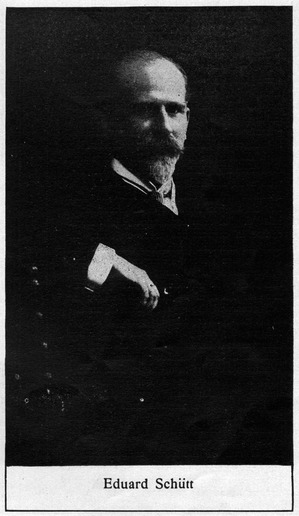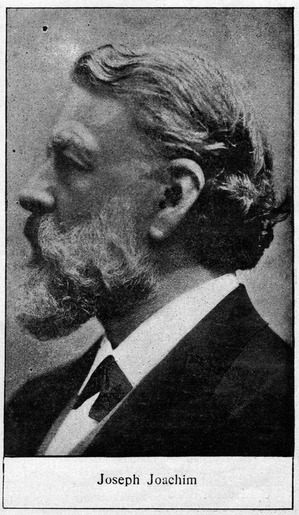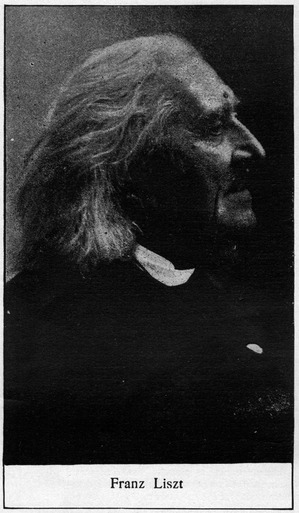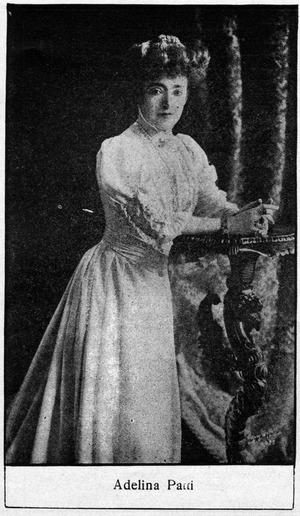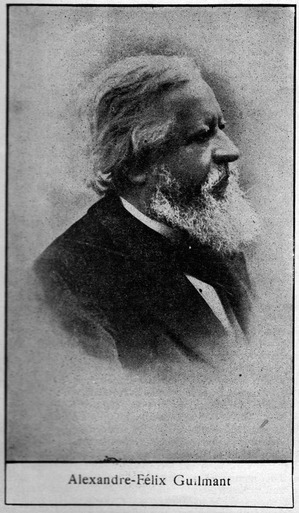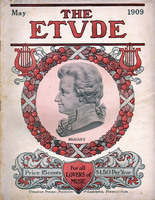(Schueet)
Schütt was born in St. Petersburg, October 22, 1856. Quite early in life he came under the influence of Anton Rubinstein, with whom he was on terms of personal friendship. It was through the influence of the great pianist that Schütt’s parents were persuaded to allow Eduard to adopt the artistic career. Graduating with distinction from the St. Petersburg conservatory, Schütt went to Leipsic, where he studied under Jadassohn and Richter. After completing his course at Leipsic he became a pupil of Leschetizky in 1878. He then commenced his musical career in earnest and went on tour. In 1881 he succeeded Mottl as conductor of the Wagner Verein, an important musical organization in Vienna. On behalf of this society he attended the first performance of Parsifal in Bayreuth, where he was accorded the signal honor of an address from Wagner in person. From 1884 to 1887 he again went on tour. Since then he has devoted himself to composition, and has remained principally in Vienna, where he also does a little teaching. He spends a considerable part of his time in the Austrian Tyrol. His compositions for the piano include the well- known “Confessions,” “Canzonetta,” the beautiful “Carnival Mignon” and the ever-popular waltz, “A la Bien Aime.” He is one of the most melodious and able composers of the present time, and has a large following of admirers. He has also composed in the larger forms.
(Yho-ah’-kim)
The celebrated violinist was born at Kittsee, near Pressburg, Germany, June 28th, 1831, and died in Berlin, August 15th, 1907. He commenced playing the violin at the age of five, and studied under various masters in Pesth, and later in Vienna. At the age of twelve he went to Leipsic (1843), where he came under the powerful influence of Mendelssohn, who was much struck with his genius. After a successful debut at a Gewandhaus concert, Joachim achieved a great reputation in London. Subsequently he returned to Leipsic, and studied under David and Mendelssohn. He remained in that city and was, together with David, leader of the Gewandhaus orchestra. Frequent tours through Germany and England firmly established his high reputation. In 1849 he went to Weimar as leader of the Grand Duke’s orchestra, but not being in sympathy with the “new” school, did not remain there long, though he continued to be on friendly terms with Liszt. An appointment as solo violinist to the King of Hanover suited him better, and he stayed in Hanover from 1853 to 1856. In 1863 he married Amalia Weiss, the celebrated contralto. Finally he went to the Royal Academy of Arts in Berlin, 1868, as instructor of the violin, where he remained till he died. In 1869 was founded the famous quartet bearing his name, which, under his leadership, made frequent tours to the chief European cities.
(Leest, or, Americanized, List)
Liszt was born at Raidung, near Odenburg, Hungary, October 22, 1811, and died at Bayreuth, July 31, 1886. He was first taught to play the piano by his father, steward to Prince Esterhazy, but at the age of nine, as the result of his extraordinary talent, some Hungarian nobles provided for his education at Vienna. He studied piano under Czerny and composition under Salieri. He went to Paris in order to study under Cherubini, who, however, refused to take him as a pupil, as C. was opposed to prodigies. At his public appearance in Paris he created a tremendous sensation, which was later duplicated in London. On the death of his father, Liszt became a teacher in Paris. He was much influenced by Paganini, whom he heard at this time, and was a friend of Berlioz, Chopin, and many distinguished people. He soon came to be acknowledged as unrivaled in his wonderful mastery of pianoforte technic and toured Europe with amazing success. In 1847 he was appointed court capellmeister at Weimar, where he remained till 1861, when he went to Rome. In 1865 he took minor religious orders and became the Abbé Liszt. In 1870 he returned to Weimar and soon became the center of a brilliant group of composers and musicians interested in the romantic movement in music, which had for its leaders such men as Wagner, Schumann and Raff. Liszt has added greatly to the literature of the piano. The Hungarian rhapsodies and the famous operatic transcriptions are best known.
Patti is of Italian blood; her father and mother were both well known as singers in their day. She was born in Madrid, February 10, 1843. Her father became manager of Italian opera in New York while she was still a child, and it was while in this country that she received her training, partly from her half- brother, Ettore Barili, and partly from her elder sister, Amalia, the wife of Maurice Strakosch, the impresario. She frequently appeared in public under the management of Strakosch, and later went with Gottschalk to the West Indies. On her return to New York in 1859 she achieved a great success as Lucia. In 1861 she made her debut at Covent Garden, London, and became famous. She appeared with equal success in Berlin, Paris and Brussels. She sung chiefly in the operas of Rossini, Bellini, Donizetti, Verdi, Meyerbeer and Gounod. Perhaps her most famous role is that of Rosina in “Il Barbière.” The composer, Rossini, partly rewrote the music ascribed to this character especially for her benefit. She toured extensively and did not make her final appearance in opera till 1895, at Covent Garden. Since then she has been appearing in “farewell concerts,” fortunately none of which have proved final up to the present. She is the most famous of modern coloratura sopranos and will go down to posterity as unequaled in her generation. Since her third marriage, in 1899 (with the Swedish Baron Cedarstrom), she has lived principally in Wales.
(Rahf)
Raff was born at Laken, near the Lake of Zurich, May 27, 1822, and died at Frankfort-on-Main, June 25, 1882. He was largely self-taught and showed great persistence and energy in acquiring facility in the exercise of his profession. In 1843 Mendelssohn looked over some of his manuscripts, and, recognizing his great ability, gave him an introduction to Breitkopf & Härtel, the celebrated publishers. Raff was also very much befriended by Liszt, always willing to aid young genius, and also by Von Bülow. In 1854 Raff married Doris Genast, a well-known actress, and they went to Wiesbaden, where Raff soon established a reputation for himself as a teacher and composer. He moved to Frankfort in 1877, and became a teacher at the Hoch Conservatory. He remained in Frankfort till he died. It is chiefly as a composer that Raff is known, and in this respect he is more remarkable for his fecundity than for his refinement. He was the author of eleven symphonies, three operas and a large amount of chamber music, among which may be reckoned the ever- popular violin piece, “Cavatina.” He had an astonishing command of contrapuntal resource, and his scores are full of skillfully wrought devices that were introduced with the art which conceals art. Raff was a great leader in the forces of the “Romantic School,” and took a prominent part in the polemic discussions that heralded the works of Wagner and Liszt.
(Gee’-mongh)
Guilmant was born at Boulogne, March 12th, 1837, and received his first instructions on the organ from his father, who was organist at one of the big churches of that city. Lemmens was much impressed with the young organist’s playing and took him as a pupil. Guilmant was indefatigable at practicing, and read every book on music he could obtain. He became organist at St. Nicholas’ Church, Boulogne, where he remained till he went to Paris in 1878. His playing in the French capital created a great sensation and he was appointed organist at the Church of the Trinity in Paris, a post which he has retained till the present day. His playing was a memorable feature of the Paris Exhibition, 1878. Guilmant has toured abroad many times, and has been cordially received in England, Italy, Russia and in America. As a composer he has written much for his instrument, and few organ recitals are considered complete which do not include one of his organ sonatas. “Marche Funêbre et Chant Seraphique” and “Berceuse et Prière” are familiar to organists the world over. His music is polyphonic in style, though distinctly modern in character, and exhibits consummate knowledge of the instrument which he plays with such masterly skill. He has also composed a symphony for organ and orchestra.


